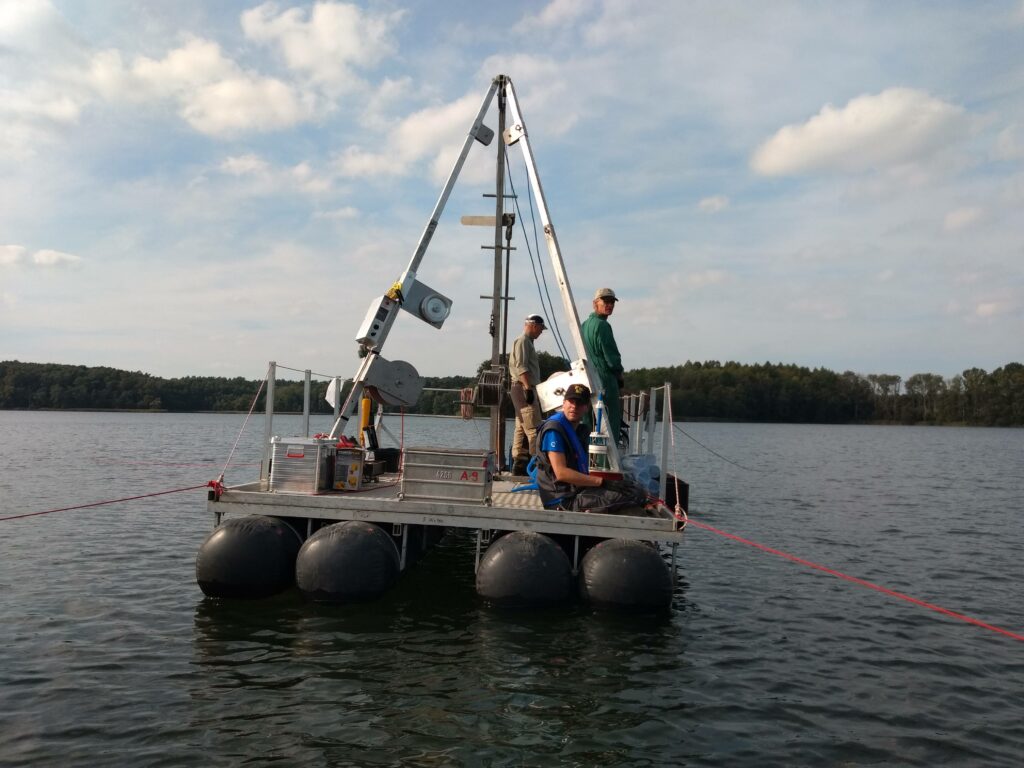Department Seminars – Ana Prohaska

As part of our departmental seminar series, on October 30 we hosted Ana Prohaska from the Globe Institute, University of Copenhagen. Ana, a specialist in environmental DNA, gave a talk titled Ancient environment as a new lens into the past: Reconstructing species and ecosystem responses from sedimentary archives, in which she discussed the potential of eDNA […]
STORMLINK Workshop

On November 30–31, 2025, our university hosted a workshop as part of the STORMLINK project, led by Damian Moskalewicz. The aim of the meeting was to summarize current global research on overwash fans formed during strong coastal storms. The event also provided an opportunity to present the project’s findings to an international forum of coastal […]
Publication in PAGES Magazine – HSI and μXRF

In the latest issue of PAGES Magazine (Past Global Changes), an international scientific organization supporting research on past climate and environmental changes to better understand their mechanisms and future impact, you’ll find a “Science Highlight” focused on combining μXRF and HSI data. Maurycy Żarczyński and Paul Zander present the principles of both techniques, the possibilities of integrating […]
Publication in Biogeosciences – peatland alkalinisation

In a new publication co-authored by Sambor Czerwiński, the authors demonstrate how pollution from cement plants affects peatlands, using an Estonian peatland as a case study. It turns out that even a small increase in pH by 0.2–0.3 can trigger lasting changes in the ecosystem, particularly impacting Sphagnum, a moss highly sensitive to alkalization. The […]
Coring platform

Her name is “Choike”. She has travelled and sailed halfway around the world and has now found a new home port. Although “choike” is a local term for a subspecies of the rhea bird, this time it refers to a lake sediment coring platform manufactured by UWITEC! From October 23 to 25, Ala Bonk and […]
Daria Wochal (UAM) visiting

On October 21–22, our Department was visited by Daria Wochal from Adam Mickiewicz University in Poznań. During her visit, she met with Ala Bonk to explore the intricacies of macroscopic charcoal analysis in lake sediments. Such short visits are a great opportunity for learning and exchanging experiences in environmental research. We wish Daria continued success […]
New PhD students

We are delighted to welcome two new PhD students to the team at the Department of Geomorphology and Quaternary Geology! Two of our recent graduates have decided to continue their academic careers within our unit. Aleksandra Orłowska will pursue the topic ” The history of fires in the Victoria Region, Australia, in the light of […]
IPA-IAL symposium – France 2025

From October 6th to 10th, three of our representatives took part in the world’s most important congress dedicated to paleolimnological and limnogeological research. The event, organized by IPA and IAL, was held in the picturesque town of Aix-les-Bains by Lake Bourget in France. Our Department was represented by Alicja Bonk, Wojciech Tylmann, and Maurycy Żarczyński. […]
QSR paper – seismites of the Southern Baltic

A major achievement – in terms of subject matter (ice sheet), research area (five countries!), and scope! A newly published article summarizes the GREBAL project, focusing on sedimentary records of seismic events related to the presence of ice sheets. During the Pleistocene, the Baltic Sea region experienced numerous seismic events triggered by the loading and […]
Short stay at UAM Poznań

Our third-year Geography student, Maria Koch, participated in a short training at Adam Mickiewicz University in Poznań from September 29 to October 3.Under the attentive guidance of Mariusz Bąk from the Institute of Geoecology and Geoinformation, she honed her skills in identifying plant macrofossils preserved in a peat core from the vicinity of Lake Priamy. […]